The 2023 World’s Strongest Man (WSM) contest came to a close on April 23 in Myrtle Beach, SC. The event saw the retirements of two generational talents, dramatic injuries, an even more dramatic leaderboard-altering penalty, unpredictable weather, and the first Canadian ever to ascend to the top of the WSM podium.
Below are six of the biggest moments from the 2023 WSM contest and the impact they had on the overall competition. For reference, here are the WSM Final standings:
2023 World’s Strongest Man Results
- Mitchell Hooper — 53.5 points
- Tom Stoltman — 49 points
- Oleksii Novikov — 41 points
- Trey Mitchell — 39.5 points — tiebreak winner (Atlas Stones)
- Evan Singleton — 39.5 points
- Pavlo Kordiyaka — 31.5 points
- Brian Shaw — 27.5 points
- Luke Stoltman — 21.5 points
- Mathew Ragg — 18.5 points
- Jaco Schoonwinkel — 5.5 points — withdrew
[Related: 2023 World’s Strongest Man Results and Leaderboard]

[Related: Cardio for Strongmen and Strongwomen to Supercharge Your Conditioning]
1. Iron Biby Withdraws, Kristján Jón Haraldsson Steps In
Before the competition even kicked off, a major change occurred. During equipment testing for the loading race, Cheick “Iron Biby” Sanou suffered a biceps injury that compelled him to withdraw from the competition. That meant a slot in Group Two of the Qualifying stage was left vacant.
To fill that vacancy, 2022 Iceland’s Strongest Man champion Kristján Jón Haraldsson was given the nod. Apparently, that nod came only a half hour before the start of the competition at 8:00 a.m. on April 19. The Loading Race marked Haraldsson’s WSM debut, and he spiked it with a second-place finish, just over two seconds behind 2020 WSM champion Oleksii Novikov, who ultimately won the group.

Although Haraldsson finished fifth out of six in his group, competing as well as he did on effectively no notice in his WSM debut and his first contest outside of Iceland is indicative of a bright future should he find his way back to the biggest stage in strongman.
2. Rookies Roll Out
Speaking of WSM debuts, much of the Qualifying stage could be defined by the quality of the WSM rookies. In addition to Haraldsson, Jaco Schoonwinkel of South Africa and Mathew Ragg of New Zealand made statements in the first two days of competition.
Jaco Schoonwinkel
Competing in Group Four against the likes of four-time WSM champion Brian Shaw and 2023 Britain’s Strongest Man champion Adam Bishop, Schoonwinkel was dominant in Qualifying. The South African was relatively unknown compared to his competition. He had only competed in three professional contests, according to Strongman Archives, without a pro victory — his top finishes were silver medals at the 2021 Africa’s Strongest Man and 2022 Official Strongman Games.
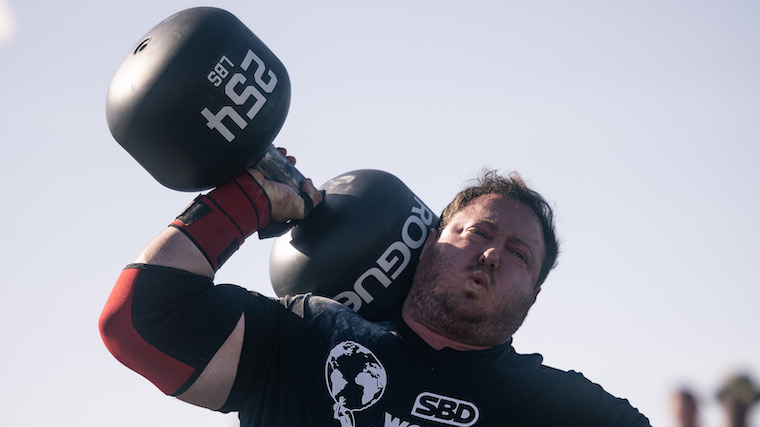
Schoonwinkel won two of the five Qualifying stage events (Loading Race and Conan’s Wheel), finished second in the Log Ladder, and converted six of seven implements in the Kettlebell Toss to secure the group win and send Shaw and Rauno Heinla into the Stone-Off. Schoonwinkel executed on both days of Qualifying to enter his first WSM Final in his WSM debut.
Unfortunately for Schoonwinkel, he had a clumsy start in the Final after falling during the Reign Shield Carry. And that was followed by a contest-ending knee injury in the Max Dumbbell event on the second day of the Final. Although he didn’t make it through the whole contest, Schoonwinkel’s performance in Qualifying should enable his return to a future WSM.
Mathew Ragg
Competing in Group Three during the Qualifying stage, Ragg’s path to his first WSM Final was no easy feat. He had to battle against the 2023 Arnold Strongman Classic champion Mitchell Hooper, the two-time WSM runner-up Mateusz Kieliszkowski, Strongman Champions League heavy hitter Aivars Šmaukstelis, former British log lift record holder Graham Hicks, and 2022 Official Strongman Games champion Spenser Remick.
While Hooper took the first four events to hard lock his group win before the Kettlebell Toss took place, Ragg’s consistency across the first two days — never finishing worse than third in a Qualifying event — led to him having the advantage in the Stone-Off against Šmaukstelis.
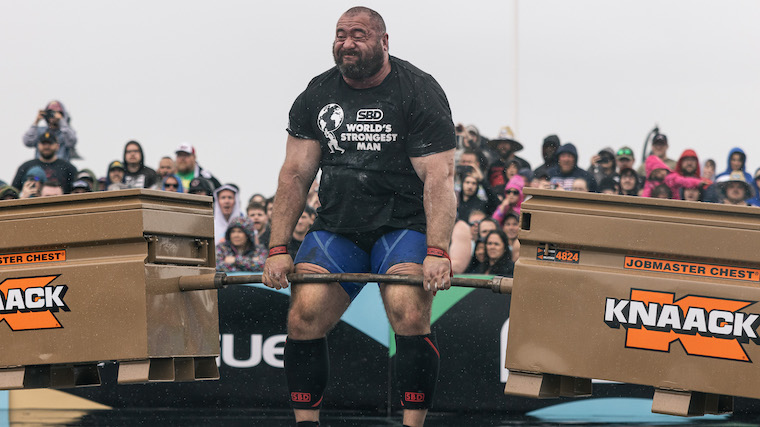
In the Final, Ragg had the difficult position of finishing second to last in the Reign Shield Carry, meaning that he was early in the turn order for the deadlift. As is often the case in strongman contests, the athletes charged to lift or compete earlier in the turn order typically perform worse overall. This isn’t necessarily because they aren’t capable of the task or because they don’t have a mark to beat, but rather are setting the mark for the rest of the field. Rarely, if ever, does a strongman dig themselves out of this hole.
Although Ragg couldn’t upend the inherent disadvantage thrust upon him from the get-go, his WSM debut was clearly a successful run for him. He will be a contender for future WSM contests should he qualify to return.
3. Retirements of Brian Shaw and Mark Felix
It’s impossible to quantify the impact Brian Shaw and Mark Felix have had on the sport of strongman. Felix holds the record for the most WSM appearances (18), extending back to 2004. The 2023 contest marked his final WSM appearance, but with it, he secured the record for the oldest athlete ever to compete at WSM at age 57 — the previous record was a year younger by Odd Haugen. Felix made three WSM Finals, with his top career finish just narrowly missing the podium in 2006 when he ranked fourth overall.
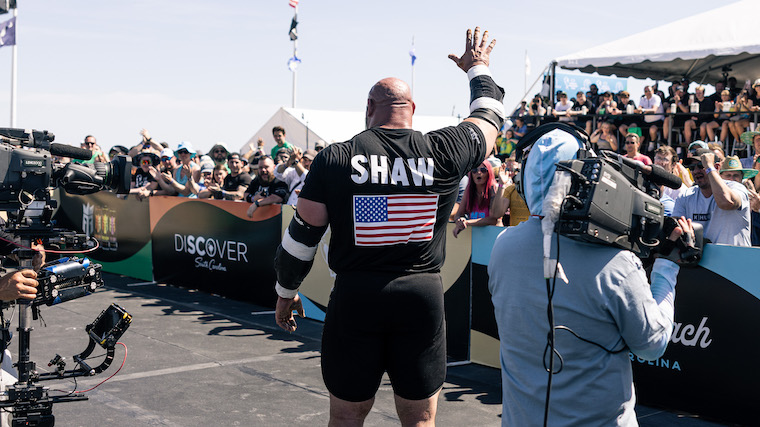
Shaw not only has four WSM titles — tied for the second most ever with Žydrūnas Savickas, Magnus ver Magnusson, and Jon Pall Sigmarsson — but he also has the record for most consecutive WSM Final appearances, scoring his 15th in 2023. The only time Shaw missed the WSM Final was his debut in 2008. During his WSM career, he finished on the podium 10 times, meaning he finished in the top three 62.5 percent of the time. His worst finish in a WSM Final was 2023 when he ranked seventh overall.
Felix will still compete in Masters strongman competition, and Shaw announced that his retirement event from competitive strongman will be the 2023 Shaw Classic.
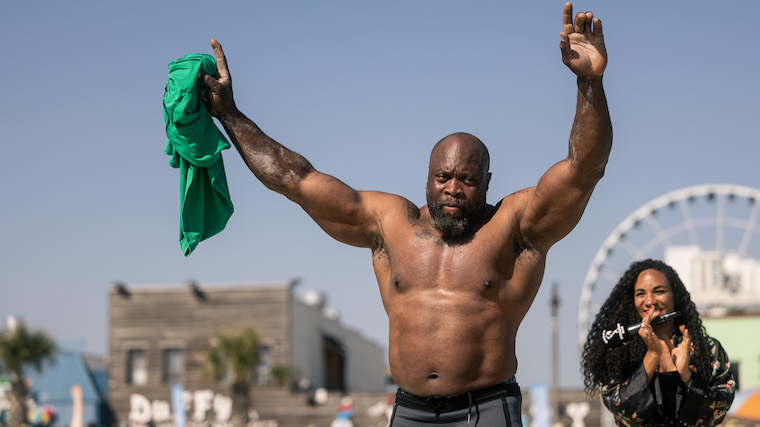
[Related: Seated vs. Standing Shoulder Press: How to Know Which One Is Right for You]
4. Deadlifting in the Rain
The weather was the first hurdle of the 2023 WSM Final. On April 22, the rain was enough that performing the opening event of the Final — Fingal’s Fingers — was too dangerous. This led to an hours-long delay in the contest and the decision to swap the order of events. The Reign Shield Carry would open the Final instead of concluding Day Three of competition.
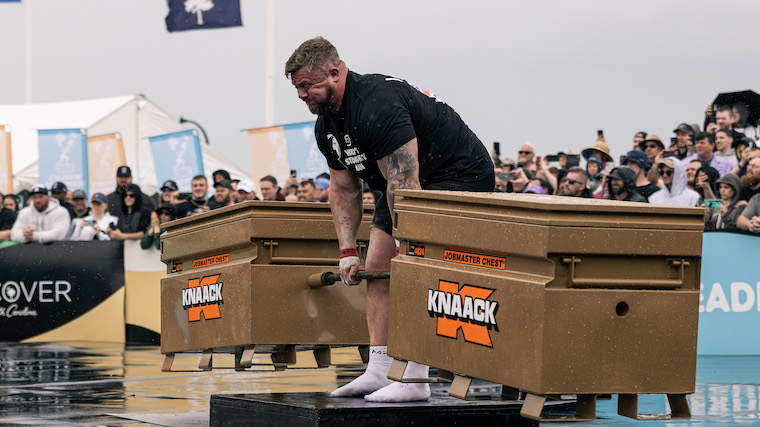
That schedule change may have switched up the strategy for the strongmen and how to approach each event, but the weather did not take their needs into consideration. Rain fell from the sky on and off throughout the day, including for a chunk of the KNAACK Deadlift event. In particular, Schoonwinkel, Ragg, Shaw, and Luke Stoltman were in the first two two-man heats and had to pull 355 kilograms (782.6 pounds) on a slick surface in heavy rain.
Although Savickas disclosed on the sidelines that deadlifting in the rain should not meaningfully impact the result, the elements were not equal across the field as the latter three heats lifted as the sun peaked through the clouds.
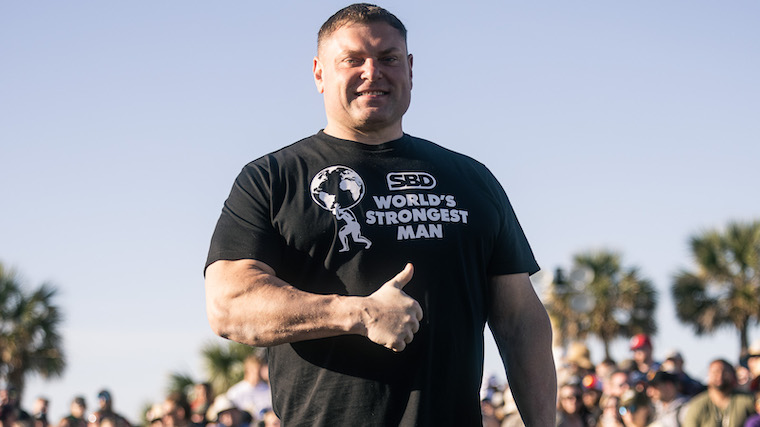
[Related: What Is Isotonic Exercise (and Why Does It Matter?)]
5. Pavlo Kordiyaka’s Incomprehensible Penalty
During the Reign Shield Carry, which opened the 2023 WSM Final, Pavlo Kordiyaka was issued a penalty for not sufficiently touching the line at the end of the 20-meter course signifying that he could turn around to continue his run. This happened on the second of his more than three lengths of the course he traversed.
Kordiyaka carried the shield the farthest distance, earning first-place points. However, the penalty issued by WSM Tournament Director Colin Bryce and the judge staff was 19.8 meters. That was nearly a third of the entire distance Kordiyaka carried the 432-pound shield, and at face value, a six-point penalty on the leaderboard and the advantage of going in the final heat in the KNAACK Deadlift.
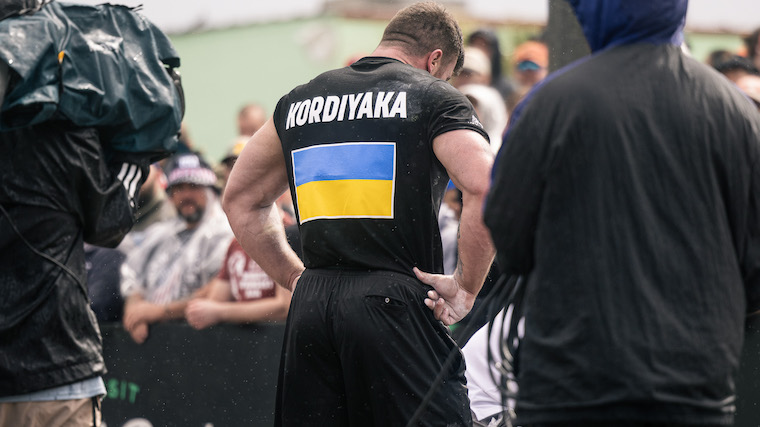
Kordiyaka ultimately finished in sixth overall. However, that result will forever have an asterisk next to it as the deduction of six points and loss of the implied advantages that come with an event win (better positioning in the following event, additional rest time, knowing how all the other athletes did) could have been the difference of Kordiyaka contending for the podium versus his middle-of-the-pack finish.
6. Mitchell Hooper, First-Ever Canadian to Win World’s Strongest Man
Hooper not only left Myrtle Beach as the 2023 WSM Champion — the first Canadian to ever accomplish that feat — but he did so in an utterly dominant fashion. From clean-sweeping his Group with four consecutive event wins to winning four of six events in the Final, Hooper was untouchable throughout the entire contest. He finished second in the Atlas Stones, and his only event outside of the top two was the Fingal’s Fingers, where he ranked sixth by four-hundredths of a second.

Since finishing eighth overall at his WSM debut in 2022, Hooper has not missed a podium in the nine strongman contests he has competed in — he’s won five, silvered two, and bronzed two. Hooper is undoubtedly the man to beat going forward, and the question now is, can the other athletes keep up?
Featured image courtesy of World’s Strongest Man